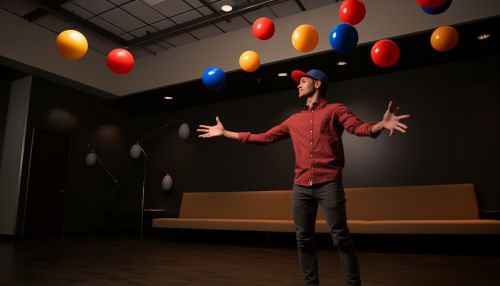Motor Coordination
Introduction
Motor coordination refers to the ability of an organism to execute smooth, accurate, and controlled motor responses. It involves the integration of sensory information and motor commands to produce organized, purposeful movements. This complex process is mediated by various structures within the central nervous system (CNS), including the cerebellum, basal ganglia, and motor cortex.


Neuroanatomy of Motor Coordination
Motor coordination is facilitated by a network of brain structures that work together to control and refine movement. Key structures include the cerebellum, basal ganglia, motor cortex, and spinal cord.
Cerebellum
The cerebellum is a major structure involved in motor coordination. It receives information from the sensory systems, spinal cord, and other parts of the brain, and integrates these inputs to fine-tune motor activity. The cerebellum is responsible for coordinating voluntary movements, maintaining balance and posture, and motor learning.
Basal Ganglia
The basal ganglia are a group of subcortical nuclei that play a crucial role in motor control. They are involved in the initiation and termination of movements, the regulation of muscle tone, and the control of motor patterns.
Motor Cortex
The motor cortex is a region of the cerebral cortex involved in the planning, control, and execution of voluntary movements. It sends signals to the spinal cord, which in turn controls the muscles.
Spinal Cord
The spinal cord transmits motor commands from the brain to the muscles and sensory information from the body to the brain. It also controls reflexes, which are automatic responses to specific stimuli.
Motor Coordination Disorders
Motor coordination disorders, also known as motor skill disorders or motor dysfunctions, are a group of disorders characterized by difficulties in the acquisition and execution of coordinated motor skills. They include developmental coordination disorder, ataxia, and Parkinson's disease.
Developmental Coordination Disorder
Developmental coordination disorder (DCD) is a condition characterized by difficulty in learning, executing, and automating coordinated motor skills. It affects both fine and gross motor skills and often co-occurs with other developmental disorders such as ADHD and autism.
Ataxia
Ataxia is a neurological sign and symptom that manifests as a lack of voluntary coordination of muscle movements. It can result from damage to the cerebellum, spinal cord, or peripheral nerves. There are many types of ataxia, including cerebellar ataxia, sensory ataxia, and vestibular ataxia.
Parkinson's Disease
Parkinson's disease is a neurodegenerative disorder characterized by the progressive loss of motor control. Symptoms include tremors, rigidity, bradykinesia (slowness of movement), and postural instability.
Assessment of Motor Coordination
Motor coordination can be assessed using a variety of tests and measures. These include clinical assessments, laboratory-based measures, and standardized tests.
Clinical Assessments
Clinical assessments of motor coordination involve the observation of an individual's performance of specific tasks or activities. They may include the assessment of gait, balance, and the execution of fine and gross motor tasks.
Laboratory-Based Measures
Laboratory-based measures of motor coordination often involve the use of specialized equipment to quantify aspects of motor performance. These may include force platforms to assess balance, motion capture systems to analyze movement kinematics, and electromyography to measure muscle activity.
Standardized Tests
Standardized tests of motor coordination are designed to provide a reliable and valid measure of an individual's motor skills. They often involve the completion of a series of tasks or activities, with performance scored based on criteria such as speed, accuracy, and quality of movement.
Conclusion
Motor coordination is a complex process that involves the integration of sensory information and motor commands to produce organized, purposeful movements. It is mediated by various structures within the central nervous system, including the cerebellum, basal ganglia, and motor cortex. Disorders of motor coordination, such as developmental coordination disorder, ataxia, and Parkinson's disease, can significantly impact an individual's ability to perform daily activities and maintain independence.
